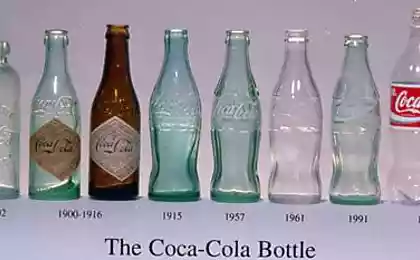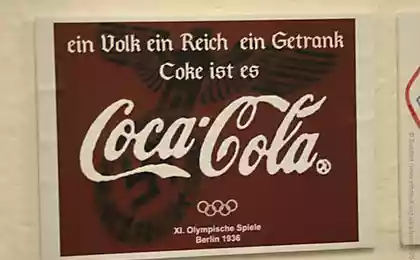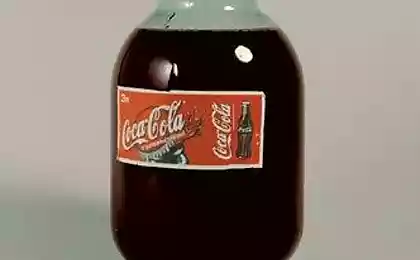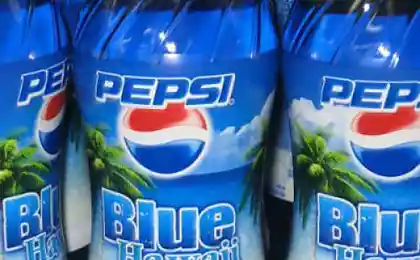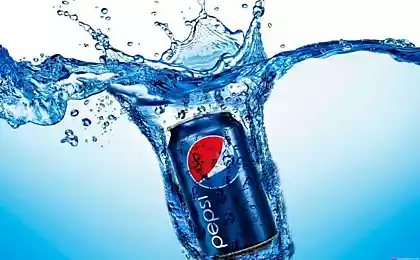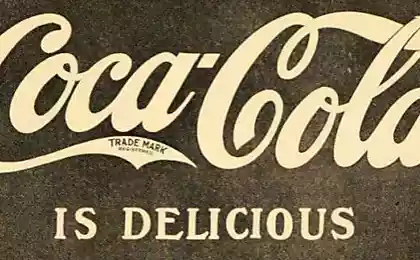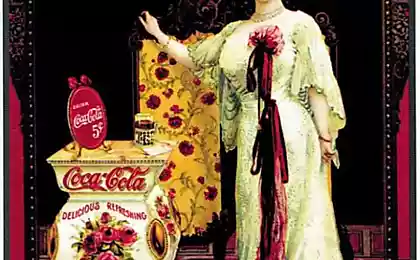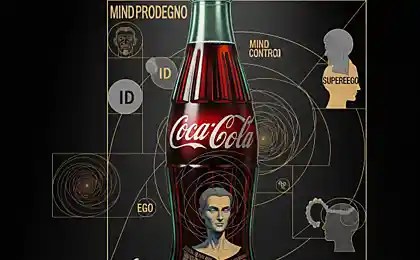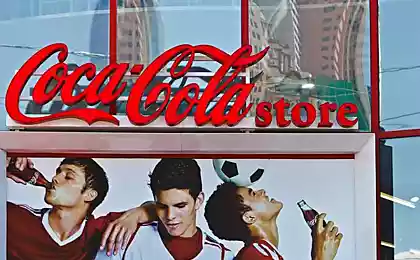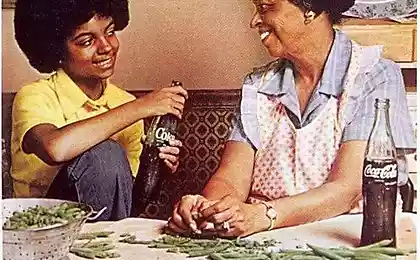3537
The recipe for Coca-Cola is no longer a mystery (5 photos)
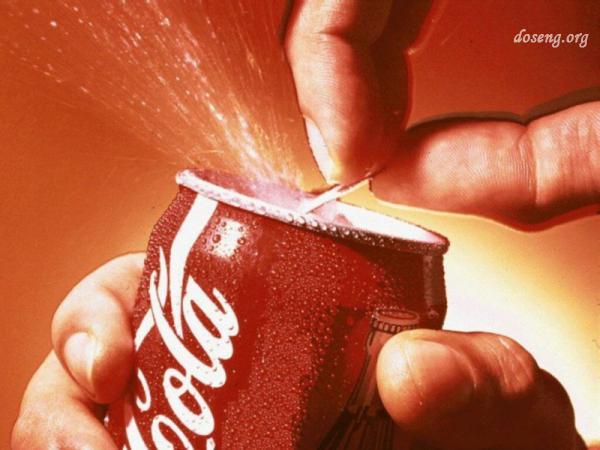
Now we know what makes a "Coke" so special. It does not add to the natural coca leaf, as previously thought. The secret ingredient turned out to be ... the worms! About a year ago, the Foundation of St. Nicholas in Turkey filed a lawsuit against Coca-Cola, requiring it to reveal the formula produced carbonated beverage to indicate the ingredients on the label.
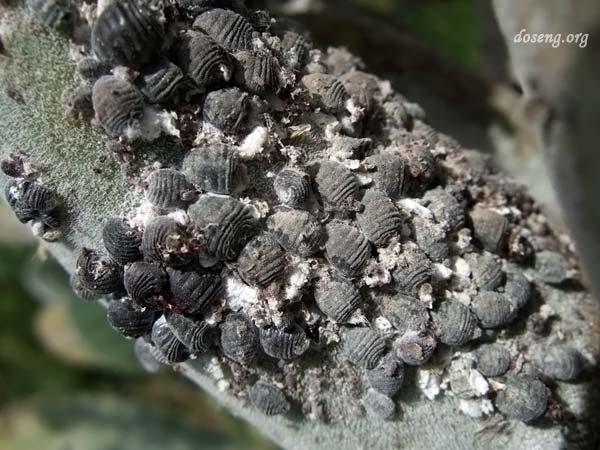
Then the fund manager Muammer Karabulut said: "On the basis of the existing in our country the law on consumers of any food manufacturer must inform the customer about the substances contained in them." "For the health of our children, we want to know which substances are used for the production of the drink, and whether they are harmful.
Secret formula drinks that world famous company faithfully kept since 1886, disclosed the secret recipe pharmacist from Atlanta, John Pemberton, according to the source, include: "sugar, phosphoric acid, caffeine, caramel, carbon dioxide and the extract is" Coca-Cola " . But what is this strange extract? According to the results of the study it was found that it is a natural dye "carmine" or supplement "cochineal" extracted from koshenilnyh scale insects. In the food industry, it is also known as carminic acid, which is assigned the international code E-120.
This is truly a strange taste! As told in the Moscow Institute of Nutrition, cochineal (fr. Cochenille, from the Spanish. Cochinilla), the common name of several species of insects from different families at the detachment coccid females which are used to produce red paint - carmine. That is the color of the label "Coca." The most valued Mexican cochineal (Dactylopius cacti), who lives on the aerial parts koshenilnogo cactus. Her homeland - Mexico. The recipe for a truly old. Back in the 20's of last century with the development of synthetic dyes, this culture has declined sharply, but natural carmine still used in some industries (food, perfume, etc.), As well as for dyeing microscopic preparations.
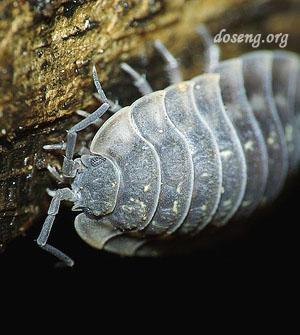
The original Coke formula looked like this: pharmacist brewed from coca leaves and kola nuts, tropical tree sweet Siropchik and took a drink from a pitcher to a pharmacy for sale. The syrup was diluted with water and sold, without much success. Legend has it that one of the visitors, who suffered from a hangover, asked to dilute the drink soda. Now the "Coca-Cola" was presented as the perfect tonic to stimulate the brain, cure nervous disorders, headaches, neuralgia and melancholy. In 1903, the New York Times published an article about excesses intoxicated by cocaine and the case was to lean towards a comprehensive ban the stimulant, "Coca-Cola" quickly reoriented.
Fresh coca leaf replaced the "squeezed out" of cocaine was no longer there. They say that there is a recipe, written by the hand of Pemberton. It is stored in a special vault, accessed by a senior company executives, and even they can only open the safe together. Today, it is simply impossible to hide a recipe: there are plenty of options for decoding the composition. Thus, it is argued that the famous ingredient 7X includes oils of lemon, orange, cinnamon, nutmeg, flowers of bitter orange, coriander and lime.

At factories mix the ingredients by code numbers, and banks continue to show off a little, that speaking the words "natural flavors».
It is safe to say that no coca or cola there is already long gone. But we know from some parasites recovered "dyes." Now, you can stop the endless tales of dissolved cellophane and decaying teeth and internal organs. The use of soda in India instead of pesticides. Otherwise, we are still alive?
"Coca-Cola" is omnipresent. On her horoscopes. It is in the army, and in space. For example, in the dream book reads: "Coca-Cola" - if in a dream you'd like to drink Coke, the real life, you may have problems communicating with the opposite sex, that occur on your insecurity. For a young woman's dream in which she drinks Coca-Cola, it promises a good novel & quot ;. So the secret knowledge of the worm will not destroy the reputation.
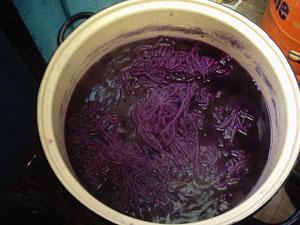
New task "Coca-Cola", the head of the marketing department of the corporation, a new approach to the consumer: "We believe that during the day there are moments, which is suitable only Coca-Cola." It remains only to tell us about these moments that we immediately understood everything and went to the nearest store.
Mystery scarlet Kermes
The history of such food coloring as cochineal carmine aka (E120), reminiscent of a detective novel. Get his men learned in ancient times. In biblical legends mentioned purple dye obtained from the red worm, which upotreblinli descendants of Noah. Indeed, carmine cochineal insect was obtained, also known as oak mealybugs or Kermes. They live in Mediterranean countries met in Poland and Ukraine, but the most famous was the Ararat cochineal. Even in the III century, one of the kings of Persia gave the Roman Emperor Aurelian woolen fabric, painted in purple color, which has become a landmark of the Capitol. Ararat cochineal mentioned in medieval Arab chronicles, which says that Armenia produces paint "kirmiz" used to dye wool and feather products, writing the book of engravings. However, in the XVI century on the world market a new type of cochineal - Mexican. He brought it out of the New World, the famous conquistador Hernán Cortés as a gift to his king. Mexican cochineal was smaller Ararat, but bred five times a year, in her thin body was practically no fat, which simplifies the process of production of paint, and the coloring pigment was brighter. In a few years, a new type of carmine conquered the whole of Europe, on the Ararat cochineal simply forgotten for many years. To restore the recipes of the past was only at the beginning of the XIX century Echmiadzin Monastery Archimandrite Isaac Ter-Grigoryan, who is also a miniaturist Sahak Tsahkarar. In the 30s of the XIX century it became interested in the opening of the academician of the Russian Imperial Academy of Sciences Joseph Hamel, who has spent "living dye" an entire monograph. Cochineal even tried to plant on an industrial scale. However, the emergence in the late XIX century, the cheap aniline dyes discourage entrepreneurs from domestic hunt to tinker with the "worms».
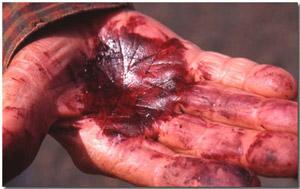
However, it quickly became clear that the need for paint will disappear from the cochineal still very long, because unlike chemical dyes, it is absolutely harmless to the human body, and therefore can be used in cooking. In the 30 years of the twentieth century, the Soviet government decided to reduce the importation of imported food and obliged the famous entomologist Boris Kuzin steal and set up production of "domestic" cochineal. The expedition was a success in Armenia. Valuable insect was found. However, its cultivation interrupted by the war. Project study of Ararat cochineal was resumed only in 1971, but its breeding on an industrial scale, it never came.
What else is prepared using cochineal-tracks?
Marmalade, sweets such as lollipop, a famous aperitif Campari. Everywhere uses cochineal bug ... But this is "the most familiar with the taste of childhood," is not it?
